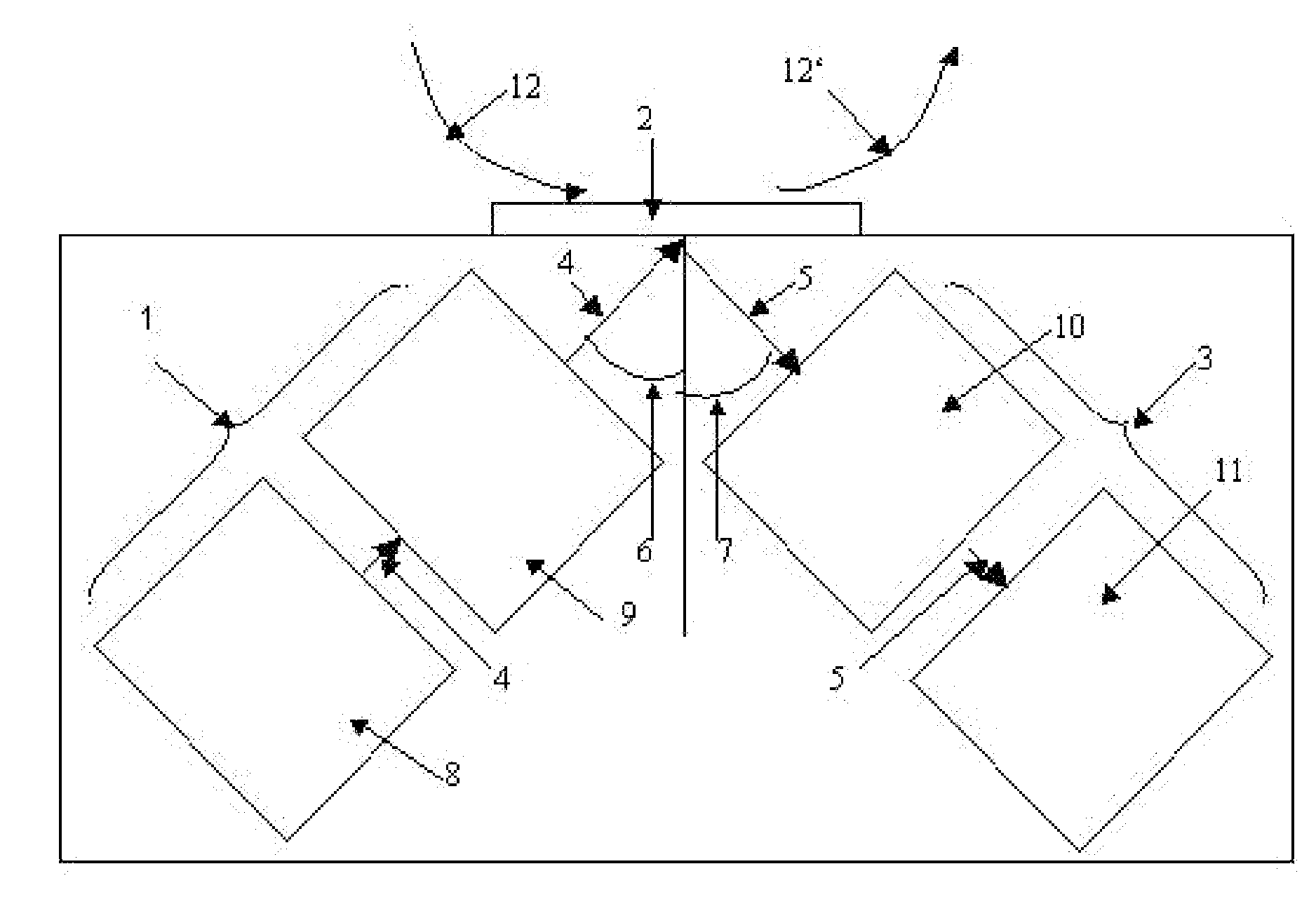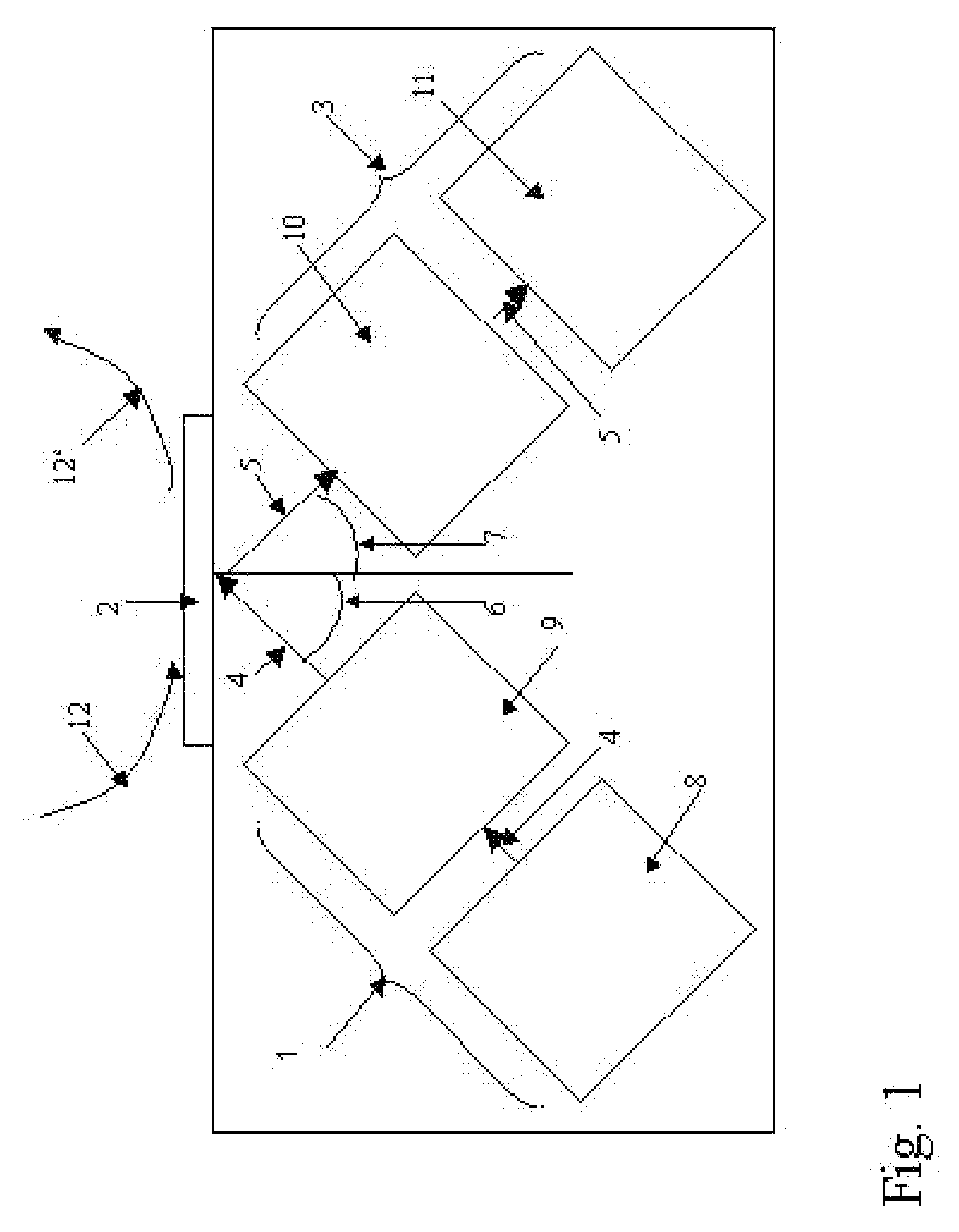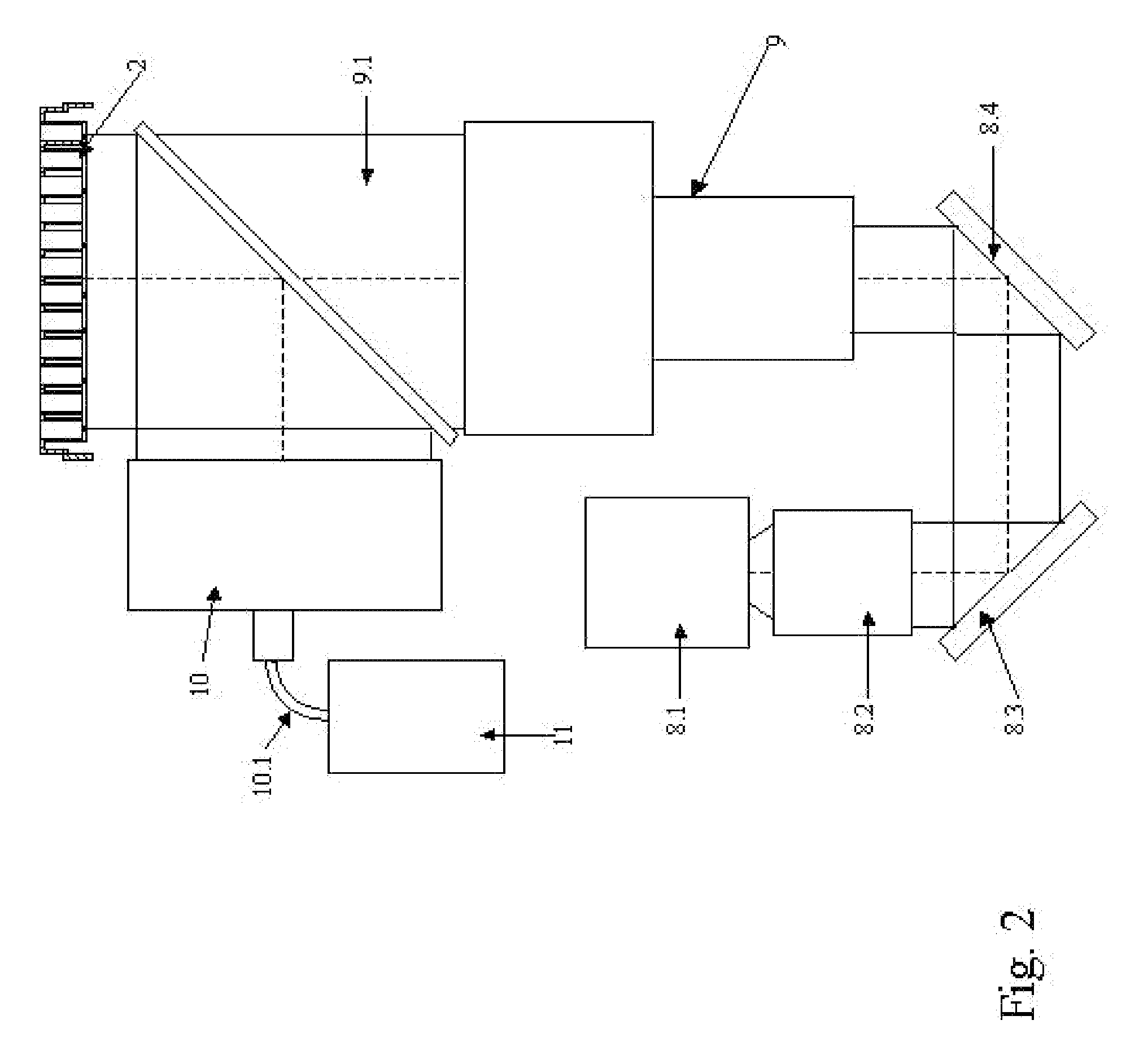Analytical System Comprising An Arrangement For Temporally Variable Spatial Light Modulation And Detection Method Executable Therewith
a spatial light modulation and analytical system technology, applied in the field of analytical systems, can solve the problems of high time expenditure for reading a large array, low sensitivity, and relatively complex optical design, and achieve the effect of reducing the total number of optical components of the system and reducing the system cos
- Summary
- Abstract
- Description
- Claims
- Application Information
AI Technical Summary
Benefits of technology
Problems solved by technology
Method used
Image
Examples
example 1
[0124]The assembly of the analytical system corresponds to the embodiment according to FIG. 4, that is, to the arrangement of the illuminating system and of the detection system on opposite sides of the sensor platform and detection of the transmitted light portion. According to a preferred embodiment of such an arrangement, the illuminating system 1 comprises a commercial projection system comprising light-emitting diodes (LEDs) as light sources. A projection system of type FF1 (Toshiba, Taiwan), for example, is suitable for this purpose. FIG. 12 shows the emission spectrum of this projector in response to a simultaneous operation of all three LED light sources. The used blue, green and red LEDs have central emission wavelengths of 460 nm, 520 nm and 627 nm, respectively, and a spectral emission bandwidth of typically 20 nm to 40 nm. The following examples mainly use the red light source, wherein it goes without saying that light sources of other emission spectrums, for example com...
example 2
[0134]The assembly of the analytical system corresponds to the embodiment according to FIG. 3, that is, to the arrangement of the illuminating system and of the detection system on the same side of the sensor platform and detection in the direction of the reflected light portion. According to a preferred embodiment of such an arrangement, the illuminating system 1 comprises a commercial projection system comprising light-emitting diodes (LEDs) as light courses. A projection system of type FF1 (Toshiba, Taiwan), for example, is suitable for this purpose. FIG. 11 shows the emission spectrum of this projection system in response to a simultaneous operation of all three LED light sources. The used blue, green and red LEDs have central emission wavelengths of 460 nm, 520 mm and 627 nm, respectively, and a spectral emission bandwidth of typically 20 nm to 40 nm. The light of the LEDs is homogenized by means of a “light tunnel” and is directed onto a Digital Mirror Device (DMD) as SLM 4. T...
PUM
| Property | Measurement | Unit |
|---|---|---|
| response time | aaaaa | aaaaa |
| frequency | aaaaa | aaaaa |
| frequency | aaaaa | aaaaa |
Abstract
Description
Claims
Application Information
 Login to View More
Login to View More - R&D
- Intellectual Property
- Life Sciences
- Materials
- Tech Scout
- Unparalleled Data Quality
- Higher Quality Content
- 60% Fewer Hallucinations
Browse by: Latest US Patents, China's latest patents, Technical Efficacy Thesaurus, Application Domain, Technology Topic, Popular Technical Reports.
© 2025 PatSnap. All rights reserved.Legal|Privacy policy|Modern Slavery Act Transparency Statement|Sitemap|About US| Contact US: help@patsnap.com



